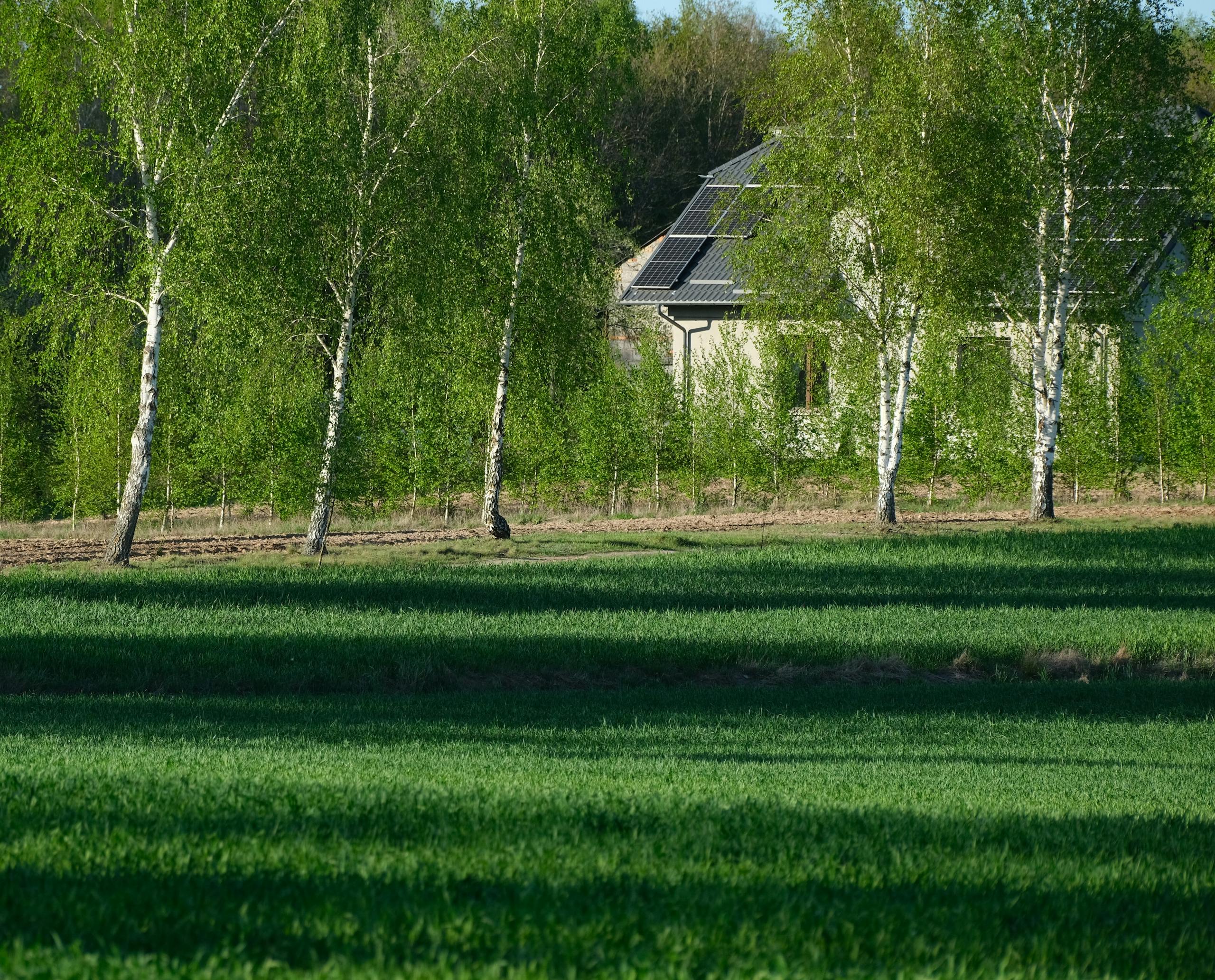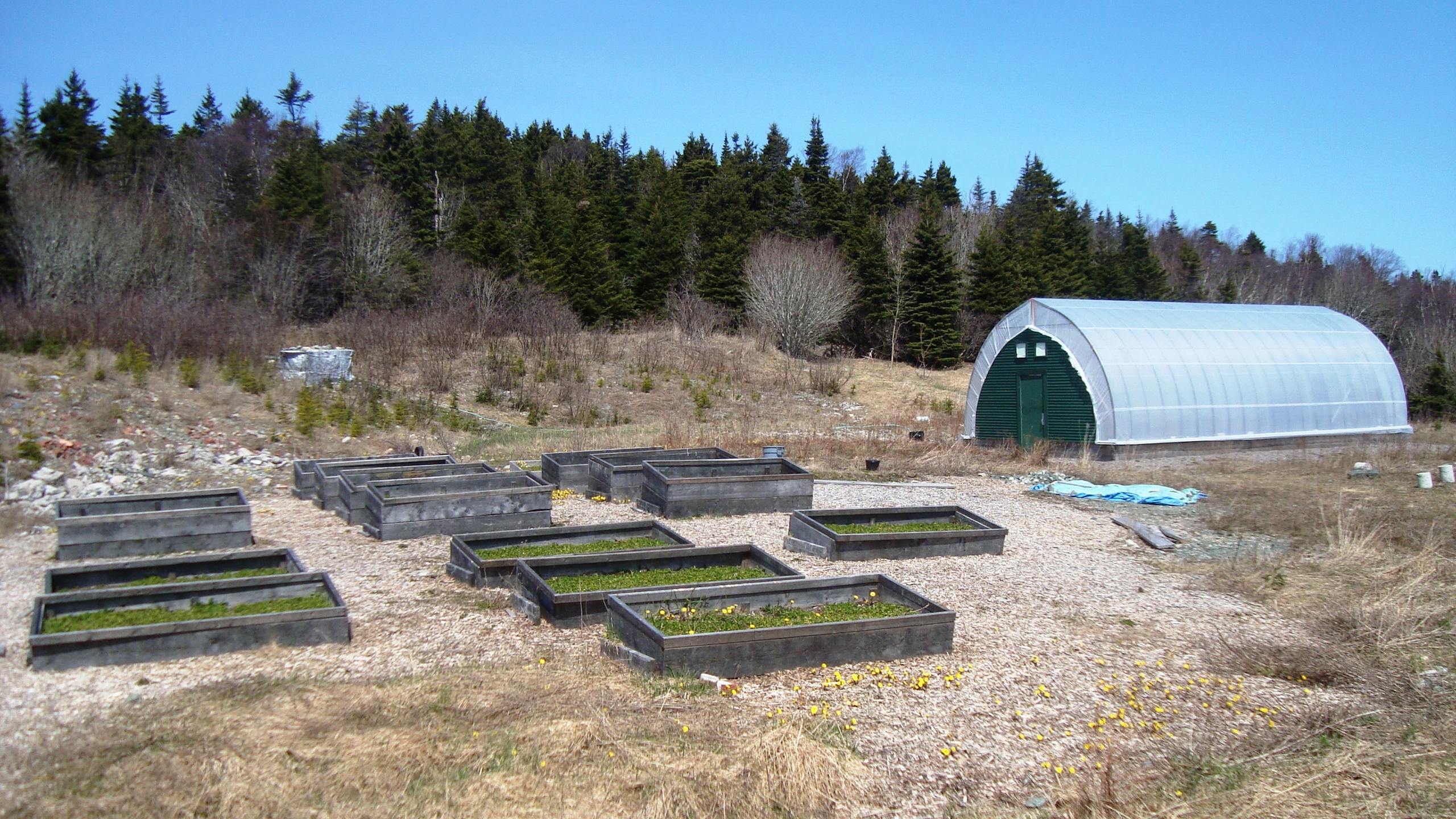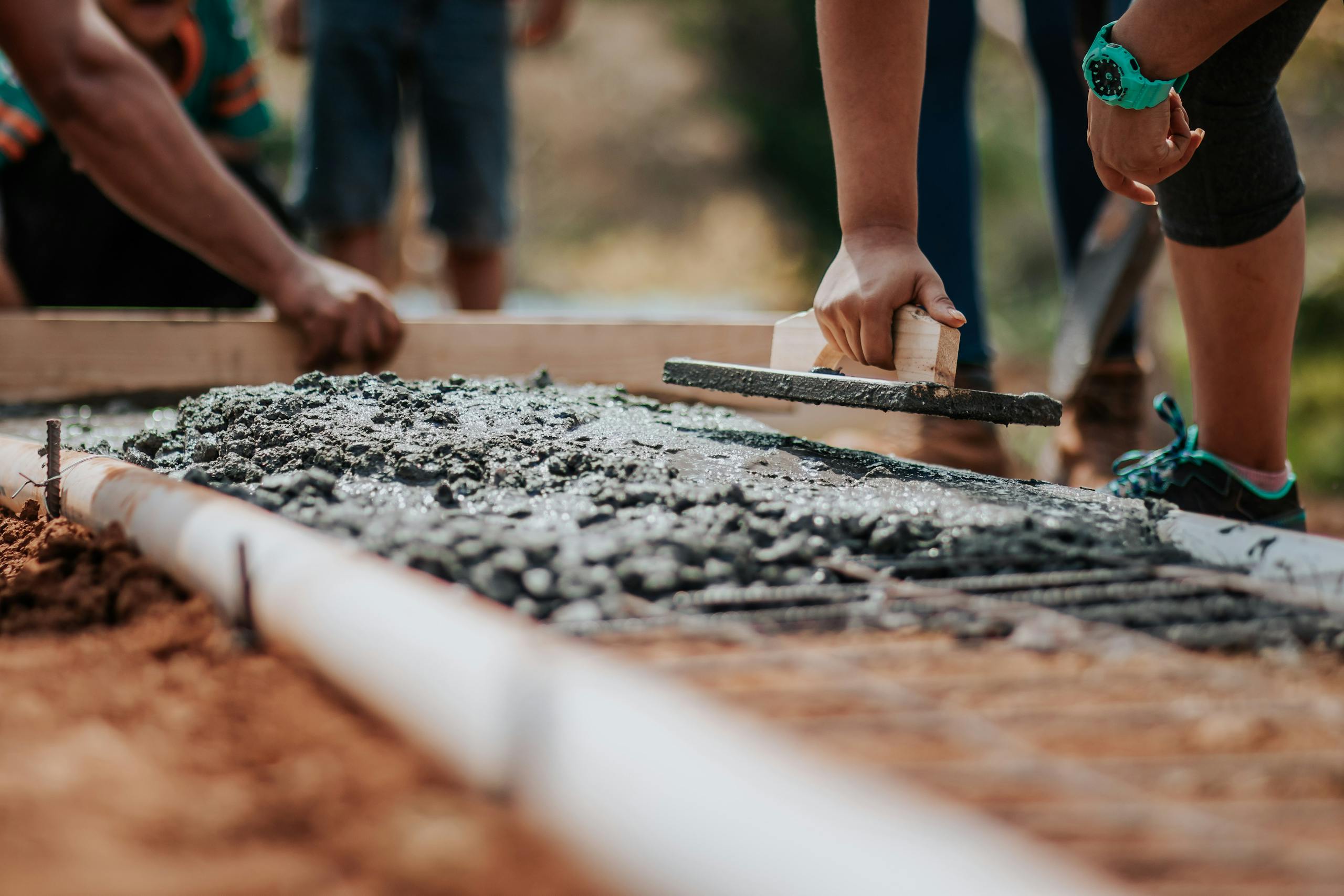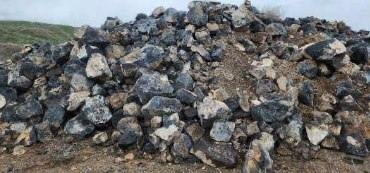How to Design a Natural Drainage System Using Rock and Sand
Dealing with excess water on your property? Whether it’s heavy rain, snowmelt, or a high water table, a natural drainage system can…
Dealing with excess water on your property? Whether it’s heavy rain, snowmelt, or a high water table, a natural drainage system can help channel and disperse water without the need for complex pipes or artificial solutions. Using the simple elements of rock and sand, you can create features like French drains, dry creek beds, and swales that blend into the landscape and effectively manage runoff. This approach is particularly fitting for high-elevation, rural properties where you want a rustic look and low maintenance. In this article, we’ll outline steps to design and build a natural drainage system using rock and sand, covering key features and best practices.
Why Use Rock and Sand for Drainage?
Rock and sand are the building blocks of natural waterways. By mimicking how water flows in nature, we achieve:
- Infiltration: Sand allows water to percolate into the ground, recharging groundwater instead of creating surface ponds.
- Filtration: As water moves through sand and gravel, sediments and some pollutants are filtered out, so cleaner water exits.
- Slow Release: A meandering path of rocks slows water down, preventing sudden flooding downstream.
- Erosion Control: Rocks armor the soil underneath from being washed away, and sand helps spread water out evenly.
- Aesthetics: A dry creek with river rock or a bed of gravel can be an attractive landscape feature year-round. It can look like a natural creek when wet, and a rock garden when dry.
These materials are also readily available. Local pits provide Drain Rock (often a mix of gravel sizes】, Pea Gravel, and Sand – all one might need. For example, Darby Pit’s Drain Rock 7/8” to 2” is perfect for filling French drains or lining swale】. Masonry Sand or Arena Sand can serve as the bedding or filter layer in many designs.
Components of a Natural Drainage System
Let’s break down some common elements you might incorporate:
- Swale: A shallow depression or channel in the land that guides water to where you want it. It’s like a very wide, shallow ditch that can be vegetated. Swales often follow the contour lines (nearly level) so water spreads and infiltrates rather than rushing.
- Dry Creek Bed: A deeper, rock-lined channel that looks like a creek, designed to carry water during heavy rains. Usually winding and landscaped to appear natural. Filled with various sizes of rocks and gravel.
- French Drain: An underground gravel trench with a perforated pipe (optional) used to intercept and redirect water. Think of it as a hidden gutter in the ground. Often backfilled with gravel or coarse sand to allow water entry.
- Rain Garden: A slight basin area filled with water-tolerant plants and a soil mix high in sand/compost that collects runoff and lets it soak in within 24-48 hours.
- Infiltration Pit or Dry Well: A deep hole or pit filled with gravel (and sometimes sand) that holds water and lets it slowly soak into surrounding soil.
- Check Dams: Small rock dams in a swale or small channel that slow water flow and create mini pools, aiding infiltration.
- Spreaders and Level Spreaders: Features that take concentrated flow (like from a pipe or a swale) and spread it out over a broader area, often a long, level trench of gravel where water can overflow evenly.
A good design often uses a combination: e.g., water from a downspout enters a French drain, which leads to a dry creek bed (swale) that winds through the yard, possibly feeding a rain garden or infiltration area.
Planning Your System
1. Observe Water Paths: In spring or whenever you have a rain event, note where water flows or stands on your property. Mark the high points (where water originates or divides) and low points (where it pools or exits). Understand the slope directions. This will guide where to place swales or creek beds. Often, a natural drainage will start where water is coming off a roof or driveway and end at a suitable “outlet” like a lower field or a stormwater ditch.
2. Determine Capacity Needed: How much water are we dealing with? For a roof downspout, maybe it’s moderate. For an entire hillside’s runoff, a larger channel is needed. Consider worst-case scenarios (biggest rain or fast snowmelt). Designing for, say, a 10-year or 25-year storm is prudent. Practically, this means sizing your swale or dry creek to be, for example, 2-3 feet wide and 1 foot deep for modest flows, and larger (4-6 feet wide, 1-2 feet deep) for heavy flows or larger catchments. If in doubt, bigger is safer, and you can fill part with extra rock to make it look proportional but still have capacity.
3. Path & Grade: Plan a route for water to travel. Avoid super steep routes if possible (water will gain speed). A gently meandering path slows flow and adds interest. You generally want a continuous downhill grade (even if slight) so water doesn’t stagnate mid-way, unless that’s intentional (like in a rain garden). For infiltration designs, you might actually make a swale level along its length so water spreads out evenly.
4. Soil Percolation: If your soil is very clayey and hardly absorbs water, you’ll rely more on carrying water to a safe outlet (like a natural creek) or using deep dry wells. If your soil is sandy or loamy, you can do more spread-and-soak tactics. Do a simple perc test: dig a hole, fill with water, see how fast it drains. If an 18” deep hole drains in a few hours, you have good infiltration potential. If it’s still full after a day, lean towards solutions that move water elsewhere or use a lot of gravel void space to hold it.
5. Gather Materials: Likely you’ll need:
- Rocks: mixture of sizes. Perhaps 4-8” river rocks for the main dry creek look, plus some fist-sized gravel for filling around them, plus smaller pea gravel for transitions. Also larger flat stones if you want to create visual accents or mini waterfalls.
- Gravel: for French drains or as bedding under rocks. Washed Drain Rock (around 3/4” to 1-1/2”) is ideal for filling drain trenche】. Pea gravel can top small areas or fill gaps.
- Sand: Coarse sand can serve as a filter layer or bedding especially around perforated pipes (it keeps fine soils from clogging the gravel). Also in a rain garden soil mix, sand is a major component (often 50% sand, 25% compost, 25% topsoil).
- Pipe (optional): Perforated pipe for French drains (4” diameter commonly). Solid pipe for carrying water under areas (like under a path) or from a downspout to a drain.
- Landscape fabric: Use a heavy-duty permeable geotextile under rock in high-flow areas to prevent soil from washing through or mixing. But avoid using fabric in areas meant for infiltration (it can clog over time). Often fabric is placed under riprap in channels.
- Tools: Backhoe or mini-excavator if long trenches or swales. Shovels, rakes, wheelbarrow, tamper. Possibly a transit or level to get slope right.
Building the System
Let’s walk through a scenario that includes a French drain leading to a dry creek bed that spills into a broad swale:
Step 1: French Drain Installation (if needed) Imagine water is collecting near your house foundation. You decide to install a French drain along the foundation that intercepts water and carries it away.
- Dig a trench about 12-18 inches deep and maybe 12 inches wide sloping away from the house (1-2% slope is good).
- Line the trench with landscape fabric (this will act as a filter to keep soil out of your gravel). Leave excess fabric on sides to fold over later.
- Pour a 2-3 inch layer of coarse sand or small gravel in the bottom.
- Lay a 4” perforated drain pipe (holes down is a common practice, or holes up works too depending on design theory; holes down allows water to fill gravel and enter from below, holes up collects water when trench is full – either way, ensure there’s a fabric and gravel envelope around).
- Surround pipe with washed drain rock or pea gravel. Fill the trench with gravel up to a few inches below grade.
- Fold the fabric over the top of the gravel “burrito style”. This keeps sediment from above from clogging the drain over time.
- You can cover the top with a layer of sand and topsoil to restore sod, or if it’s along a house edge, you might put decorative gravel on top to let water easily enter.
- The pipe should outlet somewhere – ideally to daylight on a slope or into the next feature (dry creek). At the outlet, transition to solid pipe if needed to carry water without loss (like if it’s going under a berm to the creek bed).
- If no pipe is used, a French drain can be just a gravel trench that collects and leaches water into soil – but if volume is high, pipe helps conduct it away faster.
Step 2: Dry Creek Bed / Rock-lined Swale This is where that French drain or other surface flows lead to. Choose a natural path, maybe along a slight valley or where you noticed water likes to go.
- Excavation: Shallowly dig out the shape of the creek bed. Doesn’t need to be deep – often 6 inches to 1 foot deep depression is plenty if it’s wide. For larger flows, go deeper. Incorporate some curves. Vary the width a bit for a natural look (narrow in some spots, wider pools in others).
- Grade the bed: Ensure a consistent gentle slope in the direction of flow. But you can create a few flatter “pool” sections to encourage water to slow and seep in. Too steep and you may need check dams or larger rocks to prevent high velocity.
- Line with Fabric (optional): If soil is erosive or flow high, lay down a breathable fabric on the bed and up the sides. Secure it with U-stakes or rocks.
- Place Large Rocks: Start with larger stones (maybe 6-12” size) as the structure. Imagine where water might hit hard and put big rocks there (like at bends, or to create riffles). Also use them decoratively – group them like naturally deposited clusters. Partially bury each rock a bit so it looks embedded like nature (and is more stable). If you have a variety, put some flat rocks on edges like stepping stones if you want crossing points.
- Add Smaller Rock and Gravel: Fill around the big rocks with medium cobbles and pebbles. Aim to cover the fabric completely. The dry creek should have a mix – think of how a river has big rocks, then areas of gravel. You can have a “channel” of smaller gravel within the larger creek of bigger rocks, to simulate how water might cut a path within a floodplain.
- Edging and Blending: The sides of the creek should transition to your normal ground level. Use smaller stones or gravel to feather out the edges so there’s not a sudden drop. Plant alongside with grasses or groundcovers to soften.
- Outlet: Where does the water go at the end? Ideally, into a wide area where it can disperse (like a meadow or a rain garden). Make sure the end of the dry creek doesn’t just dump water into a problem spot. You could create a broad, flat depression (like a mini wetland) at the end with lots of coarse sand and gravel under some soil – a place where water can soak in. Put some extra rocks at the end to break up the flow (like a small fan shape of gravel spreading out).
- Aesthetic touches: Perhaps add some larger feature boulders on the sides, driftwood, or perennial plants to make it look like a natural creek environment. In mountain style gardens, dry creeks can be very picturesque.
Step 3: Sand Filters or Beds for Infiltration If your goal is to maximize infiltration (water soaking in):
- You can create what’s called a infiltration trench: similar to French drain but no pipe, just a trench filled with sand and gravel that water flows into (from a swale or creek) and then percolates down. For instance, along the length of a swale you could have pockets filled with coarse sand – these act like sponges.
- Rain garden area: at a low spot, excavate a basin about 6 inches to 1 foot deep over some area, loosen the soil, mix in a lot of sand (maybe some compost too), then replant with wet-tolerant plants. Direct your creek or swale to spill into this basin. It will fill during runoff events, then drain out slowly into the subsoil. Line the inflow point with rock to avoid erosion and maybe have an overflow (like a lower section of the rim) where if it fills beyond capacity, water will exit into another swale or safe area (possibly a secondary dry creek leading further away).
- Dry well: If space is limited or water is still too much, a vertical solution is a dry well. That’s basically a deep hole filled with coarse rock (and optionally a perforated vertical pipe) where water from your system is directed (like via a pipe or chute) and then held underground to soak. You might use this if you need to get water lower to bypass an impermeable layer near the surface, or near a structure where you can’t have surface flow. You can incorporate it into a natural system by hiding an inlet in the rock creek (like a catch basin covered with stones that leads to the well).
Step 4: Planting and Final Stabilization Around your rock and sand drainage features, plant native grasses, sedges, rushes, or water-loving shrubs (like red-twig dogwood, willows, etc., if appropriate to scale). Their roots will hold soil and they can help uptake water. In swales, a common approach is a grassed swale – basically, the swale is shallow enough to be turfed or seeded with grass which slows water. In a dry creek bed, plants on the sides can help integrate it with the rest of the landscape. Mulch any exposed soil with straw or wood chips (wood chips not where water flows though, they float and move—use them on banks or in rain gardens above high water mark).
Consider seasonal aspects: in winter, a rock drainage path can also serve as a snow melt channel, and in summer when dry it shouldn’t be an eyesore. The mix of stone sizes and plantings will ensure it looks intentional, not like just a ditch.
Maintenance of a Rock and Sand Drainage System
One big advantage: if built with sufficient capacity, these systems mostly take care of themselves by letting nature do the work. But here are some tips:
- Inspect After Big Storms: Walk along the swale or creek, see if any rocks moved or if sediment is accumulating where it shouldn’t (like if a section is filling in, you may need to remove sediment or adjust slope).
- Weed Control: Keep an eye out for weeds or volunteer trees establishing in the dry creek bed, as roots could eventually clog things or divert flow. A little vegetation is good, but for example, a sapling growing mid-channel could eventually cause a blockage.
- Refresh Gravel/Sand: Every few years, you might top up the gravel in a French drain inlet or replace sand in a rain garden if it clogs with fine silt. If water seems to be ponding longer than before, some maintenance might be needed to rejuvenate infiltration (like loosening the soil, re-tilling sand into it).
- Snow and Ice: If using in winter, don’t heavily salt a rock drainage path – salt can kill vegetation and also lead to clogging of pores with salt crystals. Sand (ironically) can be used for traction on ice but then you may need to rake it back out if it washed down and accumulated. Usually, just letting it do its thing in winter is fine. If an inlet grate is used anywhere (like at a dry well or culvert entry), keep it free of ice or debris.
Example: A Simple Home Drainage Plan
To illustrate, consider a mountain cabin where spring snowmelt causes the driveway to flood and water to seep into the crawlspace. A natural drainage solution might be:
- Install a French drain around the uphill side of the house to catch water before it reaches the foundation. Use drain rock and pipe leading the water towards the driveway area.
- Along the side of the driveway, reshape a gentle swale (lined with grass or gravel) to carry water down the slope.
- Where the driveway meets the main road, build a dry creek bed that continues the swale’s path across the property line to a natural drainage (if allowed) or to a dispersion area in your yard.
- Possibly integrate a rain garden at a low spot in the yard where the dry creek broadens out — plant with native flowers that enjoy occasional soaking.
- Use plenty of local rock from Darby Pit or nearby for creek bed lining and riprap at any culvert under the driveway.
- Use local sand to amend the rain garden soil and in the French drain trench for filtration.
This system would intercept water near the source, guide it around the house safely via rock and sand channels, and finally let it soak into a designated area, preventing random flooding.
Designing with rock and sand is satisfying because you’re working with the landscape. You watch how water naturally wants to behave and then give it a path of least resistance that also enhances your yard’s beauty. Unlike a buried pipe system that you forget about until something goes wrong, a natural drainage is visible and in tune with the seasons — dry and decorative in drought, functional and almost alive in rain.
If you pair thoughtful planning with quality materials (properly sized rocks, clean sand/gravel), you’ll create a sustainable drainage network that handles spring torrents and summer downpours gracefully. And maybe it becomes a favorite feature — a babbling brook in wet times and a stony trail for exploration in dry times. That’s the charm of a natural solution: it’s not just infrastructure, it’s part of your living landscape.






